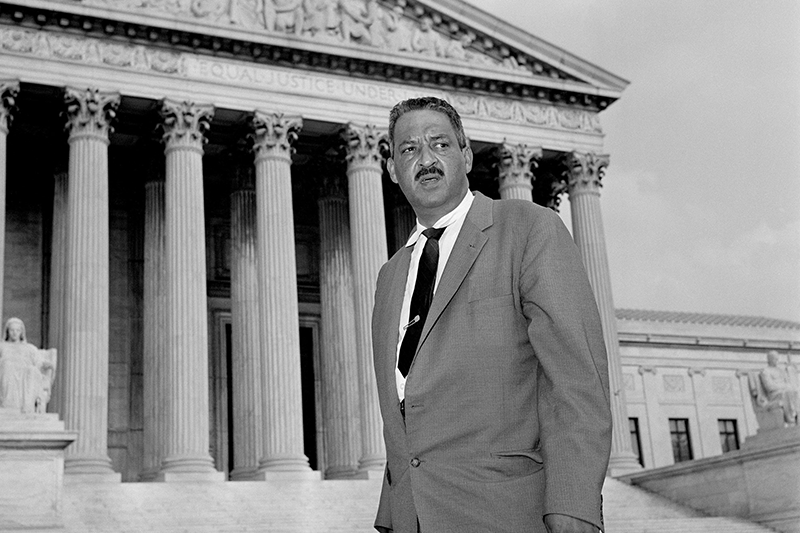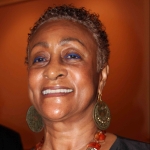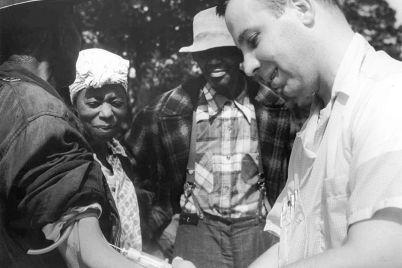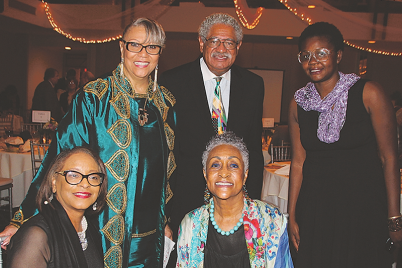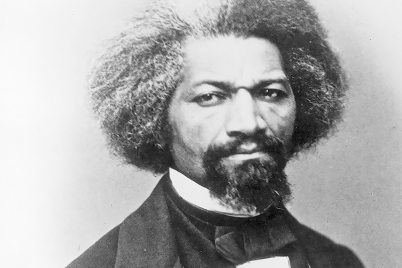Thurgood Marshall was an African-American lawyer who served as Associate Justice of the Supreme Court of the United States from Oct. 1967 until Oct. 1991.
By Attorney Jacqueline Hubbard, President, ASALH
Affirmative Action began under President Lyndon Johnson as a way of ending the civil rights struggle of the 1960s by providing employment and educational opportunities for black Americans while, at the same time, the Civil Rights Act of 1964 attempted to end legal racial discrimination.
With the passage of the Civil Rights Act of 1964, the federal government began to institute Affirmative Action for the benefit of those previously discriminated against. It was the beginning of a different future for black Americans.
It can accurately be said the evolution of black civil rights began with the assault on segregation in the opinion of Brown vs. Board of Education of Topeka Kansas in 1954. This court case was waged primarily by black Attorney Thurgood Marshall, aided by Charles White and Charles Hamilton Huston, on behalf of black public school students and the NAACP.
By the time the opinion was issued, Marshall had been the NAACP’s chief attorney since 1938, a period of more than 16 years. During this time, he fought against racial injustice all over the South and the Border States.
His work culminated in Chief Justice Earl Warren’s Supreme Court’s opinion in Brown. This unanimous decision effectively was the death knell of lawful racial discrimination in our nation’s public schools.
Yet, this short opinion, containing few outstanding phrases and consisting of only 11 pages, changed the course of history and race relations in America. This momentous decision was indeed the beginning of the end of Jim Crow laws and Black Codes. Needless to say, the white South erupted in anger and defiance.
In Brown, the Supreme Court stated:
“Today, education is perhaps the most important function of state and local governments. Compulsory school attendance laws and the great expenditures for education both demonstrate our recognition of the importance of education to our democratic society. It is required in the performance of our most basic public responsibilities, even service in the armed forces. It is the very foundation of good citizenship… In these days, it is doubtful that any child may reasonably be expected to succeed in life if he is denied the opportunity of an education…”
There were actually two Brown decisions: Brown I in 1954 (cited above), and Brown II in 1955. In Brown II, the Supreme Court unanimously declared desegregation must occur “with all deliberate speed.” However, it never really defined exactly what that meant.
Meanwhile, between 1964 and 1970, many institutions of higher learning had begun to implement Affirmative Action plans to integrate their student bodies. Some private institutions began even earlier.
Primarily, these plans used several methods to ensure their student bodies would be integrated, at least in the western, central and northern parts of the United States and the east coast Ivy League and its Seven Sister colleges, all private institutions.
Many new admission plans were put into effect, and many more black students were afforded the opportunity to attend the best, most elite, and highly regarded academic institutions in the country because of these plans.
The plans made space for the most academically talented black students, not much, but some space was cleared for black students through Affirmative Action plans. The question always inflamed segregationist academics, who falsely claimed academic standards were lowered in order to bring in these black students.
In fact, only the very best were admitted, and their admission begged the question: Why was Affirmative Action needed?
I was certainly one of these students, and I know from experience that any one of us would have succeeded anywhere. Affirmative Action permitted “race” to be taken into account for the process of admission to college and graduate school.
Then came Bakke vs. University of California, at Davis, which launched a full-fledged assault on Affirmative Action in 1977. The Supreme Court issued a split opinion, finding the Affirmative Action plan at the University of California at Davis unconstitutional because it provided a specific number of seats for minority students.
However, at the same time, the Supreme Court upheld the use of race as a criterion for admission. Since Bakke, Affirmative Action plans have continually been under assault in the federal courts.
The latest version has the most unlikely of adversaries: Asian American plaintiffs, pitting themselves against black Americans in an affirmative action case against Harvard University’s admissions program.
The plaintiff is an anti-affirmative-action group, Students for Fair Admissions (SFFA). This case essentially argues that Harvard University discriminates against Asian Americans because it limits the number of these students who qualified for admission, thereby benefiting black Americans.
Harvard argued, among other things, that its admissions criteria did not discriminate against any student population, and that they simply wanted a diverse student body, not simply an Asian one. Fortunately, Harvard prevailed in federal court, but just barely.
The SFFA case was heard in Boston’s federal courthouse by U.S. District Judge Allison Burroughs. In a recent public statement, following the court’s decision, Harvard President Lawrence S. Bacow said, “Today we reaffirm the importance of diversity — and everything it represents to the world.”
The plaintiffs have vowed to appeal the lower court’s decision to the United States Supreme Court.
Attorney Jacqueline Hubbard graduated from the Boston University Law School. She is currently the president of the St. Petersburg Branch of the Association for the Study of African American Life and History, Inc.

